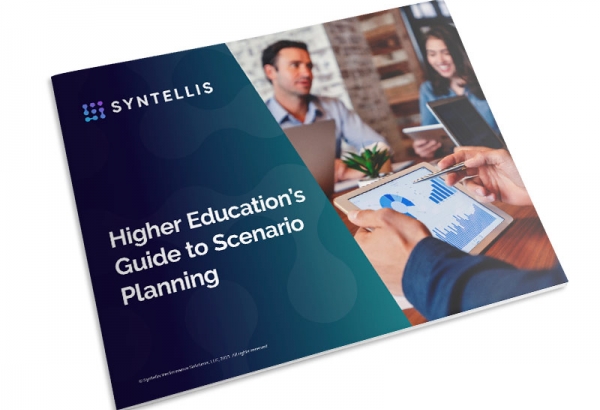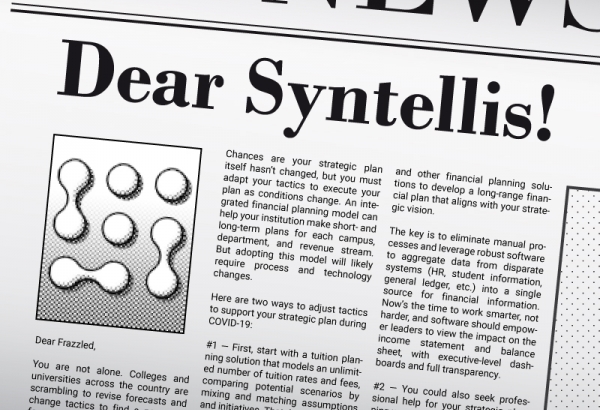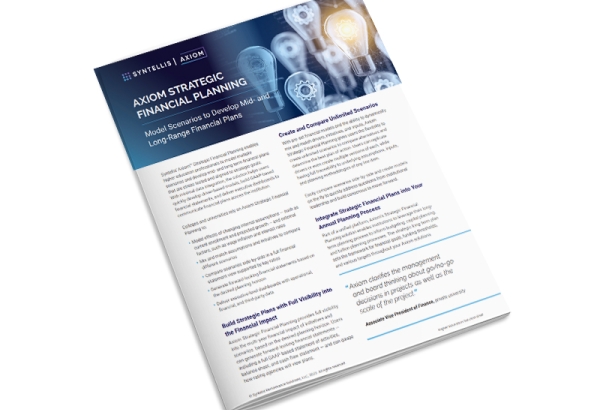Colleges and universities continue to face many uncertainties as they plan for the 2021-22 academic year and beyond. While we hoped for a quicker end to the disruptions caused by the COVID-19 pandemic, the need to deal with its impacts — including safety measures, enrollment fluctuations, and profound economic effects — highlights the importance of planning for the unknown. Even after we return to some sense of “normalcy,” higher education institutions must be nimble, agile, and prepared for whatever comes their way.
Modeling Different Scenarios for Colleges + Universities
In planning for the upcoming academic year, colleges and universities should consider various possible scenarios that could result from the pandemic. In the expected scenario, or base case, some safety measures would still be in place, hybrid learning may be here to stay, and not all events and activities are back to ‘normal.’ However, campus is open. This is the ‘new normal.’
In the worst-case scenario, campuses are only partially opened with the possibility that on-campus housing is closed or severely reduced and instruction is remote; all events and activities are suspended until further notice. On the other hand, the best case would have campuses fully reopened with no additional safety measures in place. In this scenario, all events and activities have resumed, enrollment and revenue have increased, and hybrid learning may continue.
Implementing scenario modeling, both at the unit or initiative level and organization-wide, helps quantify the potential financial impact of course modality choices, enrollment results, and changes in tuition revenue, financial aid costs, and revenues from auxiliaries such as housing, athletics, and student fees. With a clear understanding of various scenarios’ financial impacts, colleges and universities can develop mid- and long-term financial plans to ensure financial stability in the years to come.
Manual Modeling is Not the Way Forward
To better understand the financial impact of different scenarios, institutions should evaluate modeling tools and avoid manual modeling when possible. Identify which software systems provide key modeling data and functionality to help you dynamically model and compare multiple scenarios that mix and match the baseline models, initiatives, and drivers you’ve developed.
One of the biggest arguments against manual modeling is the need to understand the financial impact of each scenario both on the budget and on financial statements. Some colleges and universities prefer to develop long-term financial plans on a cash/budget basis; others rely on forward-looking financial statements based on the planning horizon.
Just as institutions must be agile in their response to changing scenarios, a scenario modeling tool must also be dynamic in its approach to long-range planning.
What to Expect from a Scenario Modeling Tool
Higher education finance teams must do more with less these days, and the ability to quickly change assumptions and see impacts is critical. A dynamic scenario modeling tool makes changing initiatives and driver sets as easy as toggling a few switches. Where running new models using Excel used to take days, a scenario modeling tool can produce new models within minutes, allowing you to easily edit as needed and then take immediate action
Syntellis’ Axiom™ Long-Range Planning enables higher education professionals to model multiple scenarios and develop mid- and long-term financial plans that are stress-tested and aligned to strategic goals. Colleges and universities rely on Axiom Long-Range Planning to:
- Model effects of changing internal assumptions — such as current enrollment and projected growth — and external factors, such as wage inflation and interest rates
- Mix-and-match assumptions and initiatives to compare different scenarios
- Generate forward-looking, GAAP-based financial statements
- Deliver executive-level dashboards with operational, financial, and third-party data
Hope for the Best, Prepare for the Worst
As you’re looking ahead to the 2021-22 academic year, and regardless of the scenario you expect to unfold at your institution, the adage “If you fail to prepare, you prepare to fail” rings true. Finance leaders should explore and prepare for not only the expected base case but also the worst and best cases.
Read Higher Education’s Guide to Scenario Planning for 2021-22 to learn best practices for increased agility and better understand the possible impacts, solutions, and opportunities presented by various scenarios.
Read more on navigating higher ed's future:

Higher Education’s Guide to Scenario Planning

Dear Syntellis! What’s the best way to manage scenario modeling?


